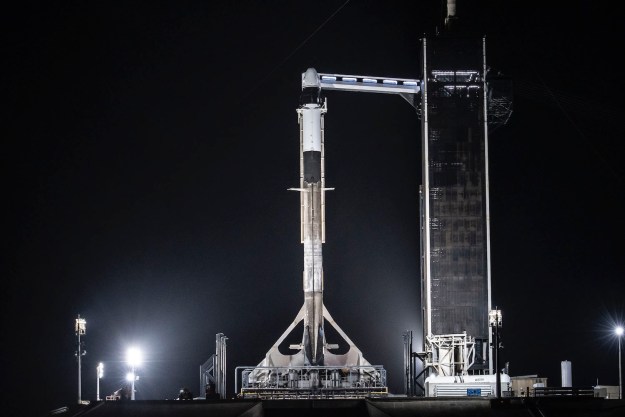It was a busy week at the International Space Station (ISS), with two astronauts making lengthy spacewalks and installing equipment to welcome some new visitors. In preparation for the upcoming test launches of commercial crew capsules, astronauts installed some high-definition cameras on a crucial docking component that was originally designed for the space shuttle.
In a lengthy spacewalk that was broadcast live on NASA TV, commander Drew Feustel and engineer Ricky Arnold spent nearly seven hours connecting the equipment to the exterior of the station’s Harmony module.
The SpaceX Crew Dragon and the Boeing CST-100 Starliner will begin transporting astronauts to the ISS in 2020, ending the U.S. reliance on Russia’s Soyuz program.
To accommodate the commercial crew vehicles, NASA had already retrofitted the module with an International Docking Adapter back in 2016. The new cameras will assist crew members aligning the arriving spacecraft as they dock.
The equipment will also provide wireless access to laboratories and experiment modules on the ISS.
Due to technical setbacks, both SpaceX and Boeing are behind schedule on testing and deployment of their commercial crewed spacecraft. In May, SpaceX CEO Elon Musk denied reports that they were two years away from operational status, saying the Crew Dragon was on schedule for an August test flight and their first crewed mission in December.
For its part, Boeing wants to accelerate the timeline for its Starliner program, turning a crewed test flight into a fully operational mission.
It was the 211th spacewalk for maintenance on the station, and it also marked an important milestone. During the mission, Feustel surpassed recently retired astronaut Peggy Wilson for third on the all-time list of most experienced spacewalkers. It was the ninth spacewalk of Feustel’s career, and he’s now spent a total of 61 hours and 48 minutes working in the airless vacuum of space.
Astronauts have now spent a cumulative time of nearly 55 days outside the ISS.
In an exhilarating moment, Ricky Arnold took a ride on the end of an extendable robotic arm to reach some equipment that was too far away for an astronaut tethered to the station to reach. As he put it on Twitter, “Space was our office yesterday.”
Editors' Recommendations
- Watch SpaceX’s Crew Dragon thrusters guide it to space station
- SpaceX Crew-4 astronauts are on their way to the space station
- Check out this cool NASA image of SpaceX Crew-3’s ride home
- NASA’s private Ax-1 crew gets some extra time in space
- Watch NASA’s Crew-3 astronauts share highlights of their ISS mission


